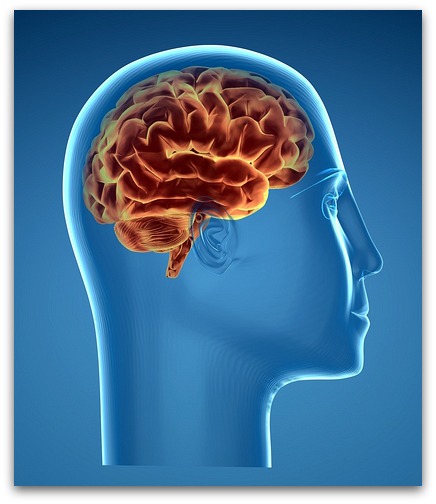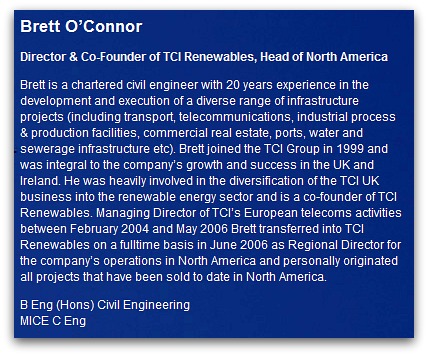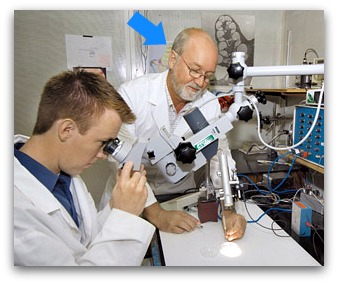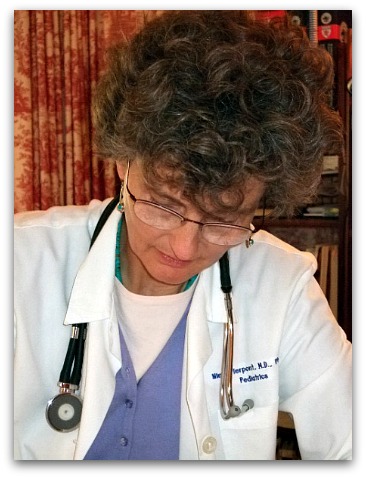“There’s no impact to human health!” Really? (Ohio)
Oct 6, 2011
.
“Can turbines generate health problems?”
 This image was not part of the original article—Editor
This image was not part of the original article—Editor
.
—Lou Wilin, The Courier.com (Ohio), 10/5/11
Living close to wind turbines can hurt your peace of mind, job performance and health, according to some health experts and researchers.
“If you’re within a mile, you’re asking for trouble,” said Alex Salt, an otolaryngology professor at Washington University in St. Louis.
Air Energy TCI, a company which plans to erect wind turbines between Arcadia, Fostoria and New Riegel, would locate some within one-third of a mile of a home, the company’s development manager, Rory Cantwell, said Tuesday. He said Air Energy’s standard exceeds the state standard by more than 500 feet.
 Brett O’Connor BA Civil Engineering, TCI Renewables, from the website
Brett O’Connor BA Civil Engineering, TCI Renewables, from the website
.
“(Wind turbines) don’t emit enough noise to do any permanent damage,” said Brett O’Connor, operations director for TCI Renewables in North America, the parent corporation of Air Energy. “All thoroughly peer-reviewed, properly conducted scientific analysis has concluded that there is no impact to human health.”
 Professor Alec Salt, PhD, Department of Otolaryngology, School of Medicine, Washington University (St. Louis, MO)
Professor Alec Salt, PhD, Department of Otolaryngology, School of Medicine, Washington University (St. Louis, MO)
.
But Salt, who has studied the ear for 37 years, said wind turbines can, and do, cause some people problems. He has company.
In her book, “Wind Turbine Syndrome,” Dr. Nina Pierpont of Malone, N.Y., tells about some neighbors of wind turbines experiencing ear and health problems.
Sleep disturbance, memory and concentration problems, headaches, dizziness and nausea, and ringing or buzzing in the ears are among their troubles, Pierpont said. Those problems can lead to further health deterioration, said Pierpont and Salt: high blood pressure and heart palpitations.
Nina Pierpont, BA (Yale), MA & PhD (Princeton), MD (Johns Hopkins), formerly clinical professor of Pediatrics, College of Physicians & Surgeons, Columbia University (NY)
.
“There are really distinct effects on susceptible people,” Pierpont said. “You just can’t function in this. It’s like you’re wading through mud mentally. You’re sick.”
Susceptible are those older than 50; those with migraine disorder, motion sensitivity, and existing inner ear damage from, say, exposure to industrial or military noise; and toddlers and early school-age children, she said.
Wind turbines produce low-frequency sounds, which the industry says cause no trouble because people do not hear them.
“That’s absolutely false,” Salt said. “The ear is designed so you don’t hear low-frequency sounds, but it isn’t insensitive to them. Those sounds are still going in and they are still being transfused. Even though you don’t hear it, it wakes you up.”
Salt said people over time have adapted to not notice their own body’s low-frequency sounds, like breathing and heartbeat. But when it comes to wind turbine sounds, sooner or later the brain notices they come from outside the body, and that’s when the trouble starts, Salt said.
For some, the trouble starts within a few weeks. For others, it happens immediately.
“People have difficulty describing the problem they’re having. It’s not a sound you’re hearing. It’s an uncomfortable feeling in your ears,” Salt said. “It’s a perceiving. You’re not hearing. It’s a fullness or a stuffiness in your ear.”
“It’s an odd feeling,” he said. “It’s close to motion sickness.”
Unfortunately, by the time residents experience problems, the wind farm has set up shop and enlisting its help is difficult, said Carmen Krogh, a board member for the Society for Wind Vigilance in Killaloe, Ontario. Wind turbines are more pervasive in Ontario than in Ohio.
“Once the turbines are established, it’s hard to get any kind of resolution to health troubles,” she said.
The health of those affected can deteriorate while they battle for years with a wind turbine company, Krogh said. Some people have abandoned their homes, rented elsewhere or moved in with a relative, she said.


Comment by Jo B on 10/06/2011 at 11:59 pm
Please go to The Courier.com website. Up on the right-hand side you can pull down articles on wind farms from Wednesday, local news. Please read both of the articles and leave comments after each.

.
.
It would help greatly if you would write a Letter to the Editor, but you must sign your name. Send to Letter to the Editor, The Courier, 701 W. Sandusky St, Findlay, OH 45840
I’m sure you can find a way to email a letter to the editor on their website. Any help is appreciated.
Editor’s note: The writer of this plea lives in the community described in this article, and she is desperately trying to raise consciousness about the serious impacts the wind turbines will have on these people—their health, property value, birds & bats, and the whole tenor of their neighborhoods being devastated (neighbor vs. neighbor, living in an industrial wasteland, etc.). Please assist her.
Comment by Willem Post on 10/07/2011 at 8:40 am
A rotor blade of a wind turbine passes the mast about once per second, 1 Hz, at about 20 rpm of the rotor.
This produces a spectrum of air pressure waves; some have higher frequencies (may be heard) than others (too low to be heard, but felt).

.
.
1 Hz = 1 cycle per second, or 60 cycles per minute; the same as most people’s heart beats.
Some parts of the heart have a different resonant frequencies than other parts.
The air pressure waves are affecting not only the hearing, but also the heart.
Willem Post
Editor’s note: Here are this man’s credentials:
Willem Post BSME (Bachelor of Science in Mechanical Engineering) New Jersey Institute of Technology, MSME (Masters of Science in Mechanical Engineering) Rensselaer Polytechnic Institute, MBA (Masters of Business Administration) University of Connecticut. P.E. Connecticut. Consulting Engineer and Project Manager. Performed feasibility studies, wrote master plans, and evaluated designs for air pollution control systems, power plants, and integrated energy systems for campus-style building complexes. Currently specializing in energy efficiency in buildings.
Comment by Helen Schwiesow Parker, PhD (Licensed Clinical Psychologist, Massachusetts) on 10/08/2011 at 10:03 am
Good Article! “Thank you” to the reporter!
It’s also crucial to appreciate the health impacts of the IWT’s (Industrial Wind Turbines’) assault on mental health and wellbeing. The effect of the turbine noise (whether ‘heard’ as unnatural, percussive, threatening, annoying, or felt as infrasound, consciously or unconsciously)—the negative effect of turbine noise on mental health is direct and powerful.

.
.
Consider the hypersensitivity of the autistic child. Would you choose to bombard that child with additive, strident, unpredictable, chronic, aversive stimuli just because you can?
How many people who have chosen to live in semi-rural environments (now targeted for IWT installations) have a similar, albeit less radical, sensitivity to noise? How many chose to locate where their homes are simple shelters welcoming the outside in, for whom the idea of ‘sound mitigation’ from turbine noise fairly equals life in a padded cell? For what purpose?

.
.
Imagine what our classmates experienced in the hellhole of Vietnam. The baggage returning with our Veterans from the Middle East. You’ve heard of PTSD: “Post Traumatic Stress Disorder.” Do you know that the symptoms include “intense psychological distress or physiological reactivity [heightened sensitivity] when the person is exposed to triggering events that resemble or symbolize an aspect of the traumatic event”? Think of what the throbbing drone of the turbines brings back to a veteran’s cellular storage of fear/terror/anxiety. Would you want it brought back, had you experienced it—once again up close and within earshot, but this time at home, where you had invested all that you had for your retirement years, believing you were now out of the war zone and safe?
Beam yourself into the shoes of those with a history of migraine headaches, now exacerbated by the unpredictable whims of the wind. Imagine what our neighbors suffer when these debilitating headaches now come (still) unpredictably but (now) exacerbated by these towers put up without public input (as in Falmouth, MA) or without informed public or political process (as throughout the world)?
Add in the psychological distress engendered by the physiological destabilization which Pierpont describes with respect to balance mechanisms, nausea, tinnitus, vertigo, anxiety, panic attacks, memory and concentration loss.

.
.
Add in the victims’ helplessness to effect change, betrayal by elected representatives whom we count on to protect our health and well-being, who now stonewall any consideration of our objective outrage at the clear torture waged on our persons.
Add in the demands on our persons to fight these installations, on-goingly, with lives given over to complaint protocols, sound measurements, letters to representatives, discouraging consultations with group-hired attorneys, a desire to re-frame every social encounter either to score a point or to pretend this isn’t the center of your life.
Don’t let it happen to you! Fight back before it’s too late!
Comment by sue Hobart on 10/11/2011 at 1:18 pm
Thank you … and no kidding, I am nuts now….
Sue Hobart, Falmouth, MA